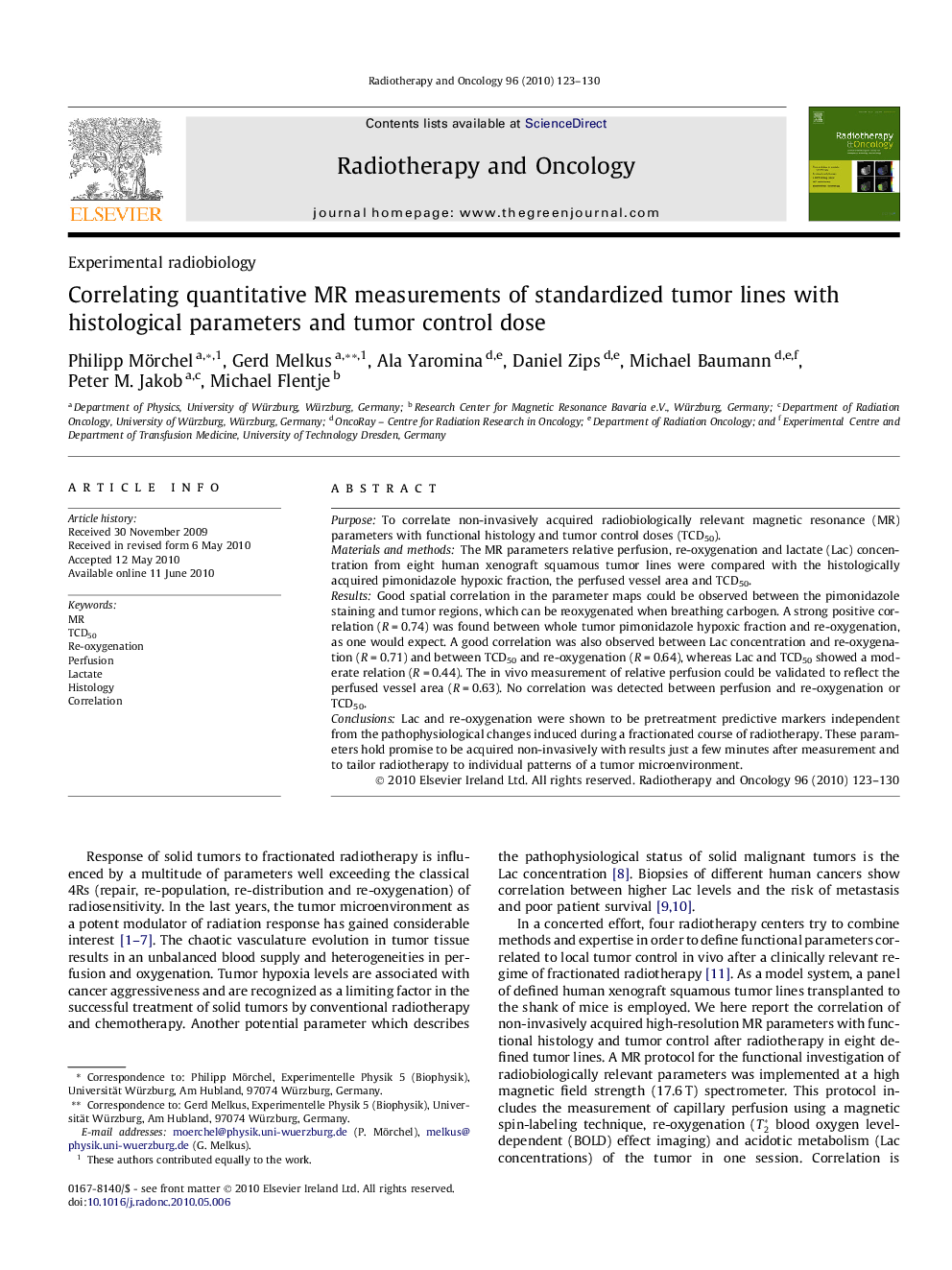| Article ID | Journal | Published Year | Pages | File Type |
|---|---|---|---|---|
| 2158986 | Radiotherapy and Oncology | 2010 | 8 Pages |
PurposeTo correlate non-invasively acquired radiobiologically relevant magnetic resonance (MR) parameters with functional histology and tumor control doses (TCD50).Materials and methodsThe MR parameters relative perfusion, re-oxygenation and lactate (Lac) concentration from eight human xenograft squamous tumor lines were compared with the histologically acquired pimonidazole hypoxic fraction, the perfused vessel area and TCD50.ResultsGood spatial correlation in the parameter maps could be observed between the pimonidazole staining and tumor regions, which can be reoxygenated when breathing carbogen. A strong positive correlation (R = 0.74) was found between whole tumor pimonidazole hypoxic fraction and re-oxygenation, as one would expect. A good correlation was also observed between Lac concentration and re-oxygenation (R = 0.71) and between TCD50 and re-oxygenation (R = 0.64), whereas Lac and TCD50 showed a moderate relation (R = 0.44). The in vivo measurement of relative perfusion could be validated to reflect the perfused vessel area (R = 0.63). No correlation was detected between perfusion and re-oxygenation or TCD50.ConclusionsLac and re-oxygenation were shown to be pretreatment predictive markers independent from the pathophysiological changes induced during a fractionated course of radiotherapy. These parameters hold promise to be acquired non-invasively with results just a few minutes after measurement and to tailor radiotherapy to individual patterns of a tumor microenvironment.
